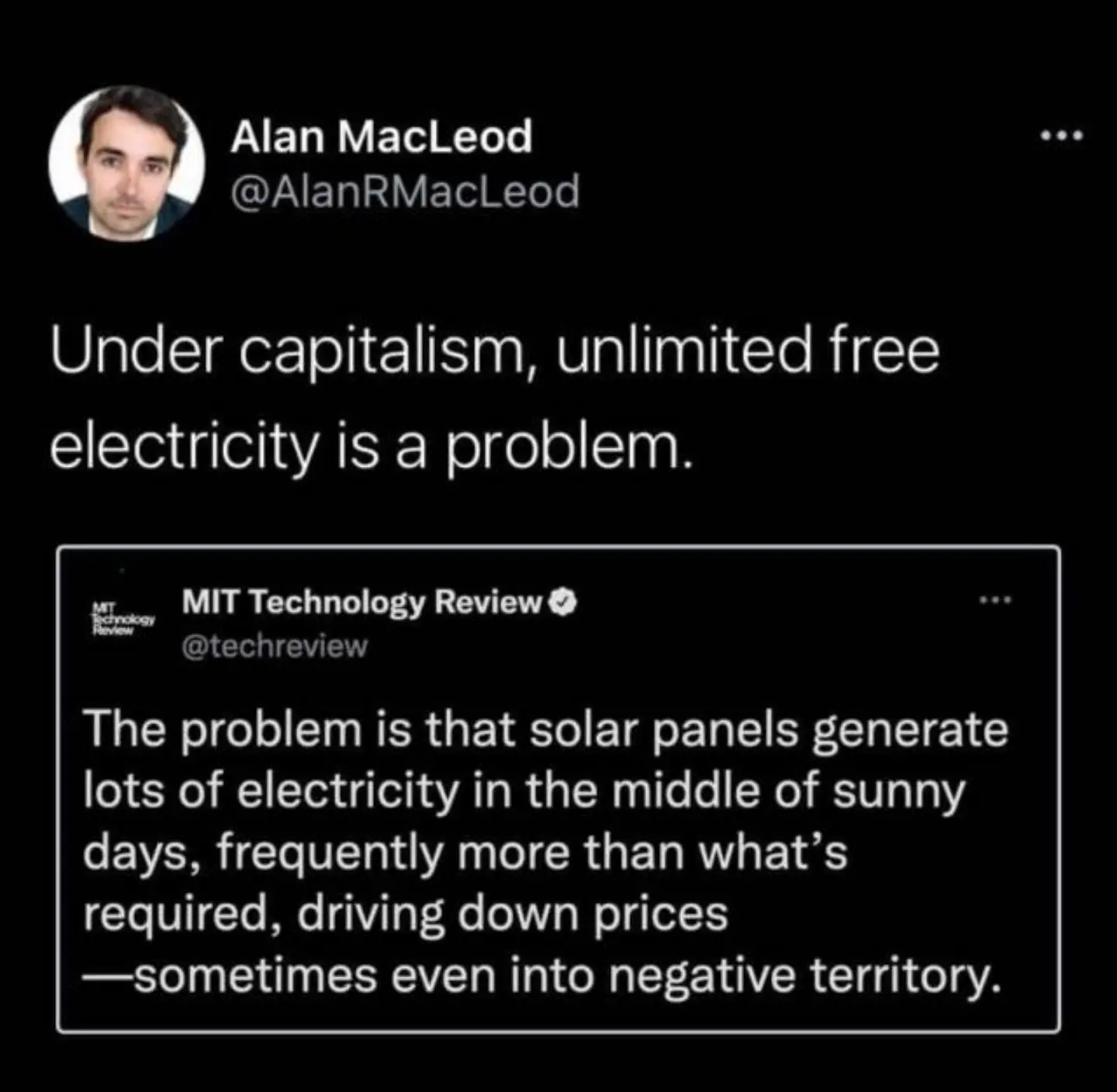this post was submitted on 09 Apr 2024
1665 points (96.0% liked)
Solarpunk
7917 readers
78 users here now
The space to discuss Solarpunk itself and Solarpunk related stuff that doesn't fit elsewhere.
Join our chat: Movim or XMPP client.
founded 3 years ago
MODERATORS
you are viewing a single comment's thread
view the rest of the comments
view the rest of the comments

There's no post scarcity. The power available on the grid must always equal the power consumed. Or all the hell will break loose.
That's wrong and it's simple to explain why.
If the grid allows negative prices, grid storage becomes a profitable business opportunity.
The power consumption will always go up or production will go down if prices go negative.
We are missing a key piece of the puzzle to decarbonise the grid and that's storage of the abundant renewable power we could easily create.
This is a sign the market is ready for investment in storage.
The person you're responding to is talking about physics, not economics.
They're mixing the two to attempt to make a point. "Post-scarcity" is an economic concept, and I've never heard that term used in physics.
It's two separate statements. We don't live in a post scarcity world. Power grids have physical limitations regarding power in and power out.
Ah then it's just two non sequiturs that don't relate to each other
ah yes the physics concept of "post scarcity"
Power plant operators are known to have dreaded this inevitability. There will be no more electrons.
There's no point about talking about the physics of the grid without the economics.
The story of the New York blackouts is not one of groundbreaking physics.
It's the story of two lightning strikes, some very basic physics, and a systemic failure.
Understanding the systemic failure is not a physics question. Electricity is already well understood and that physics isn't changing.
A renewable grid is not a physics question either. It's one of regulation, redundancies and the end goal hasn't changed.
Saying "production and consumption on the grid must match" might as well be put in the pile with statements like "wires must be made of conductive material". They're just 2 things that haven't changed.
in fact, if the price of electricity on the grid changes at all. Storage becomes a point where money can be made.
Question: Who do you think is paying these "negative prices". Spoiler: It's the TSOs. They can't do that for long, or simply go bankrupt.
Yes, "storage of the abundant renewable power" is a key piece of the puzzle, but "The power available on the grid must always equal the power consumed" is something that can not be broken. If it does, equipment will break, people will be without power, and it'll cost the TSO tons of money to repair.
There's post scarcity, but only during a short time of the day, when power consumption is relatively lower (it spikes when people come home, because everyone turns their lights and machines on around the same time).
Oh, and I don't know about the USA, but the Dutch grid is pretty much overloaded, so there is no space to move the power to the storage units (whether the storage exists or not doesn't matter ATM). We're working on it, but here's we're kinda fucked ATM.
Bankruptcy is seen as a bad thing. In reality it's the part of market forces everyone has forgotten is important.
If something we need becomes unstable in the market, the government has to provide it and usually does on a break even basis.
Base load electricity will likely have this future.